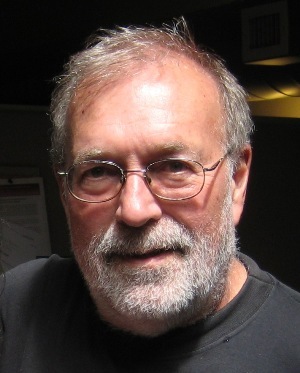Unlike economists, if all criminal justice experts were laid end to end, they actually would reach a conclusion: there’s no way today’s young people could possibly have lower rates of murder, rape, other serious offenses, and all-around criminality than the sainted youth of the 1950s.
actually would reach a conclusion: there’s no way today’s young people could possibly have lower rates of murder, rape, other serious offenses, and all-around criminality than the sainted youth of the 1950s.
Just look at the sweeping changes in American childhood: widespread family breakup beginning in the Sixties; escalating poverty levels since the 1970s; the rise of gang and drug cultures in the Eighties; widespread, vastly more explicit popular culture in the 1990s; soaring drug abuse, crime, and imprisonment among their parents’ generation; and defunded schools, services, and programs.
Consider also the fact that there are 6 million more American teenaged youths in 2011 than in 1990, with the fastest growth in racial groups with higher arrest rates. The rapid growth and increasing racial diversity of youth populations is a development two influential crime authorities branded “deadly demographics.” They forecast in 2003 that the United States would endure a skyrocketing youth and young-adult crime epidemic bringing well over 10,000 murders annually.
Yet, falling crime numbers were debunking scary predictions. Now, the FBI’s latest 2011 data shows youth arrests plummeted to lows not seen since the mid-1960s for robbery, assault, and drugs, and the lowest rates ever reliably recorded for homicide, rape, property offenses, and misdemeanors. Given that before the 1970s, many juvenile crimes were not recorded due to lack of fingerprint records or were masked under general labels like “delinquent tendencies,” the modern crime decline is even more dramatic.
In 2011, the FBI’s Uniform Crime Report shows that youths accounted for just 4.1% of homicides and 9.5% of violent crimes. There are now considerably more violent crime arrests, including 40% more murders, among 40-49 year-olds than among juveniles under age 18—an eventuality conventional authorities never anticipated.
By prevailing theories, California would seem especially unlikely to experience a youth crime drop. Yet, as the state’s juvenile teenage population transitioned from 80% white in 1960 to 73% of color (Latino, Asian, African, Native, and other nonwhite American) by 2011 and suffered substantially higher poverty, new figures from the California’s state Criminal Justice Statistics Center show juvenile crime decreased more rapidly than it did nationally.
California juvenile arrest rates rose to a peak in 1974 and have generally plunged since to levels 50% lower today than in the 1970s. The drop in both felony and misdemeanor crime occurred among all races/ethnicities and both sexes.
Around 25% of the youth crime decline from 2010 to 2011 is attributable to a new law that reduced simple marijuana possession to an infraction. The remainder appears to reflect a real decrease in youth crime.
In fact, among California’s diverse youth population, rates of homicide, rape, and crime of all kinds have now fallen to levels substantially lower than those of a half-century ago. These trends should send a shock wave through the criminal justice establishment. Even with more sophisticated data and analytical techniques, no one predicted this.
Certainly, many crime authorities, such as the National Crime Victimization Survey, Monitoring the Future, and public health statistics, have acknowledged that standard measures show youth offending has been dropping rapidly for two decades. Unfortunately, many attribute the decline to unproven factors, such as more policing, demographic change, and various programs and campaigns.
For examples, we now know the 1990s “Boston miracle”—greatly reduced juvenile murders—occurred in most cities (San Francisco’s drop was even more impressive), including ones with no coherent anti-violence strategies. Studies generally find get-tough policing, including curfews and stronger sentencing, are not effective. In fact, the numbers of California juveniles confined and detained also have fallen to all-time lows in recent years, as have curfew arrests.
Emotional quips, anecdotes, generalizations of rare events, and radically expanded definitions designed to exaggerate supposedly “new” negative youth behaviors, such as bullying, sexting, dating violence, girls’ violence, and supposedly biodetermined “risk taking,” need to become as unacceptable to inflict on young people as they are to apply to other groups in society. We may even see a startling reality emerging: when theirsocioeconomic disadvantages are figured in, modern youth may be no more “crime prone” than older adults. From President Obama to academic halls to the local news, it is time to abolish prejudicial terms like “youth violence” and move beyond equating young people with crime.
Mike Males is Senior Research Fellow for the Center on Juvenile and Criminal Justice (CJCJ) in San Francisco, CA. He is author of “Teenage Sex and Pregnancy: Modern Myths, Unsexy Realities.”































